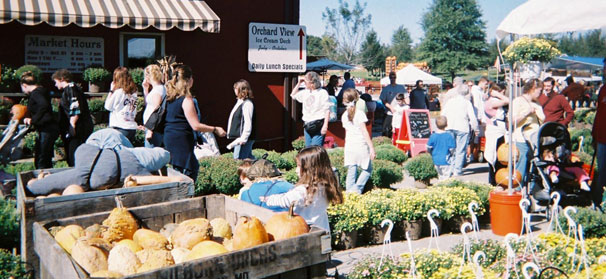
Apr 23, 2012Early warm weather worries growers
States across the Midwest and East Coast were experiencing warmer-than-normal temperatures earlier this year. In March alone, average temperatures were 15˚ F to 20˚ F higher than normal, according to The Weather Channel.
History in the making
Tom Moore, coordinating meteorologist of Global Forecast Services at The Weather Channel, said you’d have to go back to 1910 to find a record of a March similar to 2012. In 1910, however, the warmth covered the entire country. This season’s spell only seems to cover areas east of the Rocky Mountains, Moore said.
“This weather is really unprecedented,” he said. “It’s not only the percentage above normal we’re seeing for each day, it’s that we’re breaking records every day.”
So, what’s the cause of the unseasonable warmth? It’s a mixture of things – and it gets complicated, Moore said. Primary is the jet stream. Normally still in the southern part of North America in March, it was actually in Canada. Among the causes of that was the lack of snow on the ground.
“It’s not that there wasn’t snow, but there wasn’t sufficient snow cover,” Moore said. “The pattern to create snow wasn’t there, creating a lack of ice in northern latitudes.”
Snow was just one element in a chain of events that took place over the course of the winter. These events normally block the jet stream from advancing north, but they did not materialize this season, Moore said.
The effects
Larry Eckhardt, of Eckhardt Farms in Stephentown, N.Y., and president of the New York State Vegetable Growers Association, said growers in his area were quite nervous about the early arrival of warm weather.
“As vegetable growers, there are not a lot of people really jumping full force into anything right now,” he said on March 23. “Vegetable growers tend to watch the calendar more than the weather outside this early in the year.”
Eckhardt said fruit growers in his area were more concerned about the weather patterns, fearing that trees could be in full bloom when a frost or freeze occurs.
Lisa L. Schacht, of Schacht Family Farm in Canal Winchester, Ohio, said Ohio growers with perennial crops were following the crops’ lead and hoping not to have issues later. Schacht is also president of the Ohio Producer Growers and Marketers Association.
“It’s mostly out of our control,” she said.
Schacht said her strawberry crop was ahead of schedule. Like growers in New York, however, growers in Ohio are approaching the planting of annuals like sweet corn and tomatoes on a typical schedule that will have less of a chance of being caught by a damaging frost.
“The new concern is how uniform the state is in stage of spring,” Schacht said. “Producers from the Ohio River Valley area may not be that much advanced of the northern areas. We may see excesses in some crops and short season in others.”
Michigan asparagus growers were concerned. It was likely Michigan would have a very early harvest if weather conditions held steady, said Mathieu Ngouajio, an associate professor of vegetable crops at Michigan State University (MSU). As of March 17, the MSU Enviro-weather station at the Asparagus Research Farm in Hart, Mich., had accumulated 277.8 Growing Degree Days (GDD), compared to 181.9 GDD in 2010 and 90.7 GDD in 2011. 2010 had a warm spring, Ngouajio said, and asparagus harvest began around April 29, compared to May 8 in 2011.
The early arrival of asparagus might cause a labor problem, said Norm Myers, senior vegetable production educator in Oceana County, where the bulk of Michigan’s asparagus is grown. The labor force usually shows up around May 1, and it would be extremely hard to find workers if the crop were to come weeks earlier, he said.
Freezing was another potential problem. If a grower loses the first few pickings to a frost, that’s most of his overall tonnage, Myers said.
John Bakker, executive director of the Michigan Asparagus Advisory Board, said he’d never seen growers so “paralyzed” about what to do. On the one hand, they might not be able to get workers in time for the early pickings. On the other hand, even if they managed to find workers in time, a freeze could come along at any moment and kill the crop. Then they’d have plenty of workers but nothing to pick, he said.
And even if the early crop was harvested successfully, processors might not be ready for it, Myers said.
“We haven’t experienced this before,” Bakker said in late March. “I don’t know anyone who knows what to do at this point.”
‘Saving grace’
The weather pattern has made growers in the northern regions more vulnerable to cold, Moore said. While it is warm out, growers in those areas can still get freezing temperatures without much notice. The “saving grace” for growers in the Great Lakes regions could be the lakes themselves, Moore said.
“The shoreline temperatures in many of the Great Lakes and some of the larger inland lakes is above 40˚ F,” Moore said. “Growers a few miles away from them might be protected. Just like with the air temperatures, having the water temperatures that high at this time of year is unprecedented.”
By Derrek Sigler, Assistant Editor
















